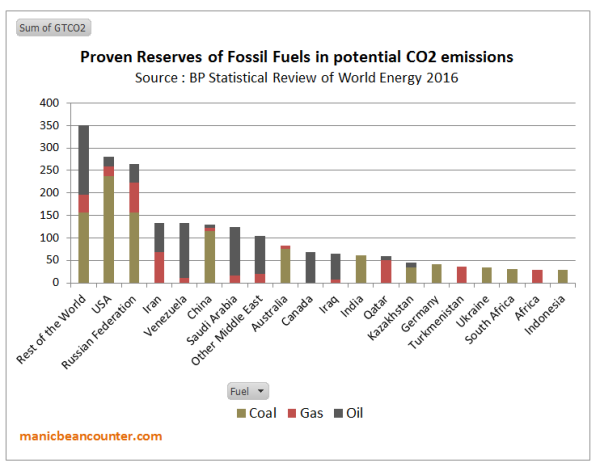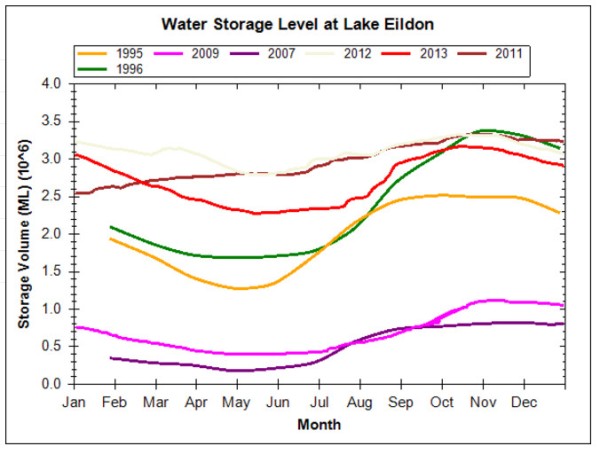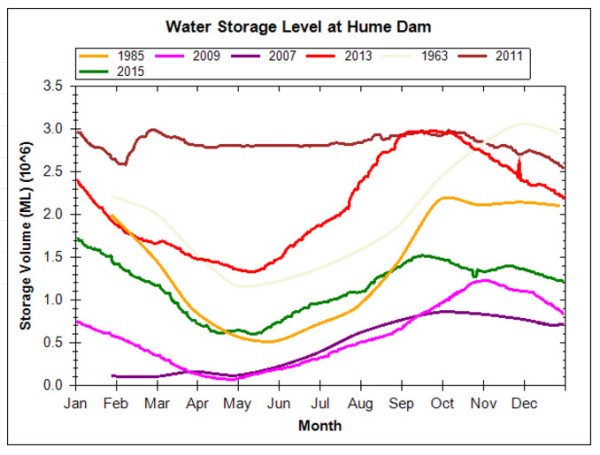Unlike the Michael Foster and other co-defendants is North Dakota, the Minnesotan Valve-Turners Emily Johnston and Annette Klapstein get their chance to present the Climate Necessity Defense. From TownHall.com (Hat tip Science Matters)
Klapstein, a retired lawyer, said they know of one case in which a judge allowed evidence about climate change but then told the jury to disregard it.
“It looks like we’re going to be able to bring in all our experts and present our evidence of how dire climate change is, so we’re pretty excited about that,” she said.
As a retired attorney, she perhaps should have read the criteria before responding.
In an order Friday, Clearwater County District Judge Robert Tiffany said the four defendants must clear a high legal bar.
In Minnesota, Tiffany wrote, a defendant asserting a necessity defense “must show that the harm that would have resulted from obeying the law would have significantly exceeded the harm actually caused by breaking the law, there was no legal alternative to breaking the law, the defendant was in danger of imminent physical harm, and there was a direct causal connection between breaking the law and preventing the harm.“
The judge said it applies “only in emergency situations where the peril is instant, overwhelming, and leaves no alternative but the conduct in question.“
This appears fairly clear. The Judge lays down four criteria to be met within an overriding one of emergency situations with no alternative. It is the legal equivalent of demanding that the positive impacts of an action greatly exceed the harms in very specific, very short-term, circumstances. Further, it is up to the defense to demonstrate that the circumstances apply, convincing the court in the face of cross-examinations.
There are a number of areas where I believe climate activists actions not only fails to meet these criteria, but does not even get anywhere close.
The timing issue
The emergency situations criteria are pretty immediate. An example is a police officer shooting dead a rampaging terrorist rather than maiming and performing an arrest. Another example might be destroying the car keys of someone who is drunk and intent on driving. The very short time scales of seconds or minutes exclude options that would take months or years to implement. There are examples of where such an emergency situation does not apply to climate change policies.
If prominent climate activist Prince Charles was correct in saying in October 2009 that we have less than 100 months to save the planet, it would not have been considered an instant peril. With three months to go until the deadline, even that appears to be somewhat alarmist in the context of a lack of increase of signals of impending catastrophic consequences.
Another source is from the pinnacle of the climate establishment. The IPCC AR5 Synthesis Report gave a very rough guide to how much CO2 (or equivalent greenhouse gases) could be emitted to limit warming to less than 2°C. From 2012 it was about 1000 GtCO2e. This flowing is part of a presentation to summarize the IPCC AR5 Synthesis Report of 2014. Slide 33 of 35.

A more recent source is Miller et al 2017 Nature GeoScience. They estimate that 240 GtC (880 GtCO2e) from now will be needed to reach 1.5°C of warming. On the IPCC’s estimate then with slightly over 50GtCO2e of emissions per annum, the 2°C of warming would be reached sometime before 2032, when the climate experts are now saying the lower 1.5°C barrier will be reached sometime before 2035. Whichever you use as the barrier for breaching of dangerous climate change, that level will not be reached anytime soon according to the climate experts. There is plenty of time for a few more, tense, annual meetings with representatives of 195 nations to pontificate about mitigation policies.
So even if extreme climate alarmism is true, the expert opinion on policy strongly implies that the defendants were not “in danger of imminent physical harm”.
Finally, in 2008 the climate necessity defense was supported by James Hansen in a couple of British court cases. The detailed document prepared as written testimony for the Ratcliffe Nottingham trial is here and a 2011 commentary on the two cases by Hansen is here. As the supposed emergency in global emissions have not appeared in eight years between the testimony and the felony why should it be still considered a pressing problem? James Hansen, sometimes referred to as the Father of Climate Change after his 1988 Congressional Testimony pushed Global Warming to the fore of the political agenda, is likely to be the key witness in the necessity defence. He would have been the key witness at the trial of Micheal Foster in North Dakota last month if the necessity defense had been allowed. After the Foster Trial, Hansen wrote a long article, including arguments that will likely be presented at the Johnston and Klapstein Trail.
Indivisibility Issues
Many people in the United States believe that abortion is murder. Suppose a group managed to close down a busy abortion clinic by constant blockades and intimidation, throwing a number of people of work. An argument could be made that some of the women will not get abortions elsewhere, but will instead give birth to a child. The necessity defense criteria could, therefore, be operable. But with respect to global warming the evidence shows (and the science agrees) that it does not matter where in the world fossil fuels are burnt, the generated CO2 will be dispersed affecting the whole atmosphere. Otherwise, Eastern USA and Eastern China would have much higher concentrations of CO2 than in Africa, Antarctica or over the oceans that cover 70% of the earth’s surface. Neither does that CO2 leave the atmosphere quickly but could remain in the atmosphere for many decades or even centuries. Therefore, the marginal impact delaying the transportation of one type of fossil fuel in one country for a few hours will have no significant impact on generations of people yet to come. As a rough estimate, the combined actions of the valve-turners (of which Micheal Foster on the Keystone Pipeline was by far the biggest contribution), was to delay the transportation of less than a million barrels of oil. That is to delay the transportation of around 1% of the daily global output of about 92 million barrels. A million barrels (140,000 tonnes) will produce around 400,000 tonnes of CO2. That is 0.4 million tonnes or 0.0004 billion tonnes. This 0.0004 GtCO2 is 0.00004% of the 1000 GtCO2e (million million) of emissions by the IPCC to breach the dangerous 2°C of warming barrier. The impact of Valve-Turners Emily Johnston and Annette Klapstein is somewhat less than this. The difference between “the harm that would have resulted from obeying the law” and “the harm actually caused by breaking the law” is infinitesimally small.
Local Harms, Wider Benefits
There is another set of harms to be considered. That is the immediate costs of property damage and business disruption from the activists’ actions, along with the time and expense of law enforcement. Even if the action could be shown to have benefits exceeding the costs, for the actual persons or entities targeted that position will be reversed. So, hypothetically, if the benefits of stopping a few hundred thousand tonnes of emissions are even $100,000,000, and the immediate costs are just $1,000,000, the benefits are across the planet decades or centuries in the future and shared by tens of billions of people, whilst the costs are immediate and disproportionately borne by very few victims that the activists select. In reality, the benefits are likely far less, and the full costs somewhat more.
The catalyst effect of the action
As this was an act of climate activism, there was probably no intention that this act would stop climate change. Rather, that the act could serve as a catalyst for action to constrain emissions. It could serve as a wake-up call to policy-makers. A year later it is possible to see any impacts.
In the United States, less than a month after the valve turners did their deeds Donald Trump was elected President and subsequently has begun to rescind climate change policies. There appears to have been no impact on the Presidential elections. If it had, then criminal acts would have influenced the election, something that would have undermined the democratic process.
Another justification could be one of a catalyst for many more criminal actions. Again, there seems to be no surge in climate activism, whether through legal or illegal means does not seem to have happened. Further, lawyers might caution against using the catalyst argument in court to defend criminal acts.
So the catalyst defense (which may not be admissible under Judge Tiffany’s criteria) doesn’t seem to have worked out.
Non-exhaustion of legal policy initiatives
Judge Tiffany’s final specification was
leaves no alternative but the conduct in question.
Was there no alternative? There are two basic criteria necessary, but not sufficient, for the necessity defense to justify an otherwise illegal activity. First, that legal alternatives have been exhausted and second, that the illegal alternative has at least an expectation of being remotely effective. As already stated, the consensus believes that to prevent catastrophic climate change means permanently eliminating global greenhouse gas emissions. With respect to the burning of fossil fuels (about two-thirds of global GHG emissions), this is on the twin fronts of reducing global emissions to near zero and ensuring permanently leaving fossil fuels in the ground.
Possibilities for closing the policy gap
The global efforts to reduce global GHG emissions culminated in the Paris Agreement, written at the end of December 2015 and signed by most countries. The Adoption of the Paris Agreement proposal; Section II, Point 17 notes gives an indication of the gap between the aggregate impact of all the vague policy initiatives and the desired policy goal.
17. Notes with concern that the estimated aggregate greenhouse gas emission levels in 2025 and 2030 resulting from the intended nationally determined contributions do not fall within least-cost 2˚C scenarios but rather lead to a projected level of 55 gigatonnes in 2030, and also notes that much greater emission reduction efforts will be required than those associated with the intended nationally determined contributions in order to hold the increase in the global average temperature to below 2˚C above pre-industrial levels by reducing emissions to 40 gigatonnes or to 1.5˚C above pre-industrial levels by reducing to a level to be identified in the special report referred to in paragraph 21 below;
In a post last month I adapted a graphic produced by the UNFCCC in the run-up to Paris COP21 to show the gap between actual policy proposals and the Millar et al 2017 estimates to prevent 1.5˚C of warming being breached.

The aggregate impact of all policy ambitions if fully implemented fall a long way short of the targets. The majority is not due to the United States, or other Western Countries, failing to reduce emissions at a fast enough rate, but the developing countries increasing their emissions, rather than cutting emissions. When compared with protests against President Trump’s policies (in a country with less than one-eighth of global emissions and a falling share of the total) there are no mass protests outside the embassies of Asian, Middle Eastern, African or South American countries, with over 80% if the global population and which collectively account for 100% of the growth in emissions between 1990 and 2012. Yet these countries have no expressed intention of reducing their emissions commensurate with the policy pathways. Criminal acts in the USA will do nothing to change this.
Leaving Fossil Fuels in the Ground
Arguments for targeting the output of Canadian tar sands include
(a) per unit of energy, it creates higher emissions than oil from say, Saudi Arabia.
(b) there are vast unproven reserves of oil in Canada that may exceed the current global proven reserves.
These aspects I will deal with in depth in a follow-up post. However, the two statements above are true. There are, however, wider policy aspects. Shutting down some of the global production of oil (and raising the price of oil) could increase the usage of coal instead. Push the price high enough and there will generate economic incentives to convert coal to liquids, a process that involves the generation of a number of times the CO2 emissions as from generating energy direct from oil alone.
The wider aspect is whether shutting down some proven reserves make available much less than the 1000 GtCO2e of emissions that would supposedly cause dangerous climate change. McGlade and Ekins 2015 (The geographical distribution of fossil fuels unused when limiting global warming to 2°C) estimate that the proven global reserves around 2900 GtCO2e. There is no clear breakdown by country, so I input their values of CO2 per unit into the BP’s estimates of global reserves of oil, gas and coal, coming up with a similar 2800 GtCO2e. These represent roughly 50 years of oil and gas supply and 120 years of coal supply at current usage rates. Taking into account other GHG emissions, to achieve the emissions target around 75% of proven reserves and 100% of any future discoveries must be left in the ground. I have produced a chart of the countries where these proven resources lie, measured in terms of CO2 produced from burning for energy.

McGlade and Ekins further estimate there are unproven but likely reserves of oil, gas and coal represent a further 8000 GtCO2e of emissions. Shutting down the Tar Sands permanently will not stop production of fossil fuels elsewhere in the world, particularly in the Middle East, Russia and other Asian countries.
Conclusion
There are a number of reasons that on their own ought to fail the necessity defense criteria laid down by Clearwater County District Judge Robert Tiffany last month.
First, the climate experts at the UNIPCC, and the policy-promotors at the UNFCCC do not believe there is an imminent emergency. They estimate the threshold to dangerous climate change will not be crossed for over a decade.
Second, the cause of dangerous climate change is meant to the rise in global greenhouse levels, caused by global human greenhouse gas emissions. Shutting down fossil fuel emissions will not stop the harms in that area.
Third, the harms inflicted on the victims of the action are local, whereas any benefits in reduced emissions are global. But there is no evidence of the activists realizing this by campaigning for policy changes in other countries on anything like the level in the USA. The activist’s actions single out a particular source and are thus discriminatory.
Fourth, although the various actions on the same day stopped a vast amount of oil being moved, it was tiny in relation to oil the fossil being produced. Further, oil is only a minority source of all global greenhouse gas emissions.
Fifth, there is a large recognized global policy gap between forecast emissions if current policy proposals are fully enacted and the desired emissions pathways commensurate with 1.5°C or 2°C of warming. To meet these global pathways all countries must participate, but the evidence is that countries with over 80% of the global population have no expressed intention to get anywhere close to these policy criteria. Further, meeting the policy criteria would mean that the vast majority of proven reserves of fossil fuels are left in the group, along with any unproven reserves. Given the geographical dispersion of the proven reserves, this is not going to happen.
The principal theme that undermines the climate necessity defense is that the marginal impact of the action of shutting down a pipeline (or even a number of pipelines) is infinitesimally small compared to the required solution. For this reason, the necessity defense is still not valid even if (contrary to all the research to date) it can be proved beyond reasonable doubt that catastrophic climate changes will happen without rapid reductions in global emissions.
Kevin Marshall








